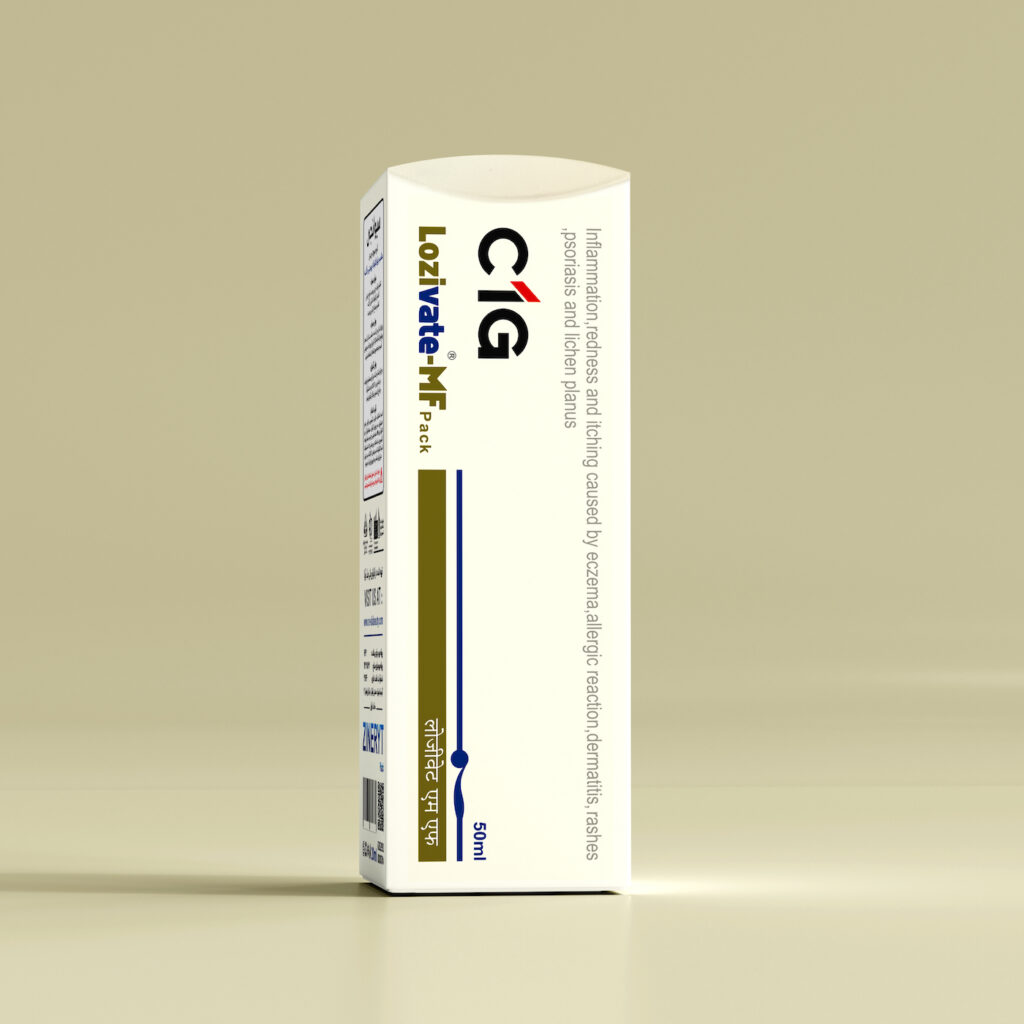lozivate mf C1G
Psoriasis is characterized by red skin lesions that are covered by scales and the edges of the lesions are well defined. These lesions are often located symmetrically on both sides of the body. The scales are usually silvery white, but there are no such scales in areas of the body such as the armpits or when the patient uses moisturizer, and the lesions are most likely smooth and shiny. Psoriasis is usually very mild and causes rashes on the elbows and knees or a scaly condition on the scalp. However, the disease can affect any area of the skin or be very severe.

Is psoriasis curable?
Until today, there is no complete cure for psoriasis, but it is possible to control psoriasis satisfactorily for most patients. Some people get psoriasis only once, which recovers after a few months and never reoccurs, in the case of dropsy psoriasis that usually occurs after strep throat, the same is true in most forms of psoriasis or Periods of recovery and relapse are observed. There may be several years between relapses. A small number of psoriasis patients are severe and permanent, which is very difficult to treat.
What is psoriasis or shingles?
Psoriasis is a common and chronic skin disease with scaly rashes that can be seen in all ages, the prevalence of this disease is about 2% of the total population. The background of this disease is genetic, so it is passed from generation to generation in the family. Also, many environmental factors are also effective in psoriasis. This disease is not contagious and is not caused by allergies. The most common age for the onset of psoriasis is in teenagers and in the late fifth decade of life. This skin disease is seen equally in men and women, although in children, it is seen more in girls than boys. Psoriasis disease is often mild so that the patient hardly notices that he has the disease, but sometimes this disease can be so severe that the patient must be admitted to the hospital for treatment. Psoriasis disease may be itchy, about 5% of people with psoriasis suffer from psoriatic arthritis joint pain, which may involve one or more joints. In this case, psoriasis can be very debilitating.
What is psoriasis or shingles?
Familiarity with corns
Corns and calluses occur in active people. Calluses are thick areas of skin that are formed due to repeated pressure or friction on an area of the skin of the foot, it is possible that calluses start from blisters. Corns and calluses are not dangerous, but they are very uncomfortable. Also, these hardened skin layers can reduce the beauty of hands and feet. Calluses cause pain when wearing shoes or walking.
What is a callus? A callus is an area made of the skin of the hands, feet, knees or forehead of a person, which causes the skin of the soles of the feet to harden due to work or a lot of wear and tear. Calluses on the skin are due to the formation of protective layers on the skin and prevent the tearing of the skin with the effect of continued wear. A callus is a bony bump that forms on the joint of the big toe. It is formed when he pushes his thumb and side finger and by putting pressure on the joint of the thumb, it causes it to grow and bulge. The skin on the callus may also become red and sore. A callus has an inner core that can be soft or hard. Soft calluses occur between the toes and hard calluses occur on the toes.
What is the cause of calluses?
The pressure on the skin causes the skin to die and a hard protective surface is created in the dead area. A soft callus also occurs in the same way, with the difference that when sweat is trapped in the place where the callus is formed. The hard core softens it, this type of callus usually occurs between the toes. The cause of corns on the soles of the feet is not caused by a virus and is not contagious, and usually occurs due to the pressure caused by shoes and boots. Calluses often appear on bunions, hammer toes, or bumps caused by rheumatoid arthritis.
The difference between a corn and a callus
Calluses are bigger than corns and have different shapes, but they are not painful. Corns usually have a hard center and are formed in a part of the skin that cannot bear weight. If you put pressure on the cornea, you will feel pain. Calluses usually occur under the heel, palm, and also on the knee.
How is the treatment of calluses?
The treatment of calluses in healthy people is to remove its unpleasant appearance. Calluses cause poor blood circulation in people with diabetes, so you should seek treatment immediately. The doctor examines and asks questions about the factors that cause calluses. Sometimes X-rays are taken to check for bone abnormalities.
Treatment methods for calluses of the big toe are as follows:
1) Prescription of crelalytic solutions to remove the keratin coating by the doctor as a medicine for calluses.
2) If there are abnormal bone protrusions, the doctor will correct the problem with surgery
3) If the callus continues to be painful, it is necessary to carry out drug treatments
4) The main treatment for corns is to remove the friction and pressure that exists
5) Warming and moisturizing the place of calluses and then separating them from the skin
6) Do not use nail clippers, scissors and knives to remove the strip.
7) Using softening cream or salicylic ointment after bathing
8) Using antibiotics to treat possible infections
Method of Use :
As prescribed by the Doctor